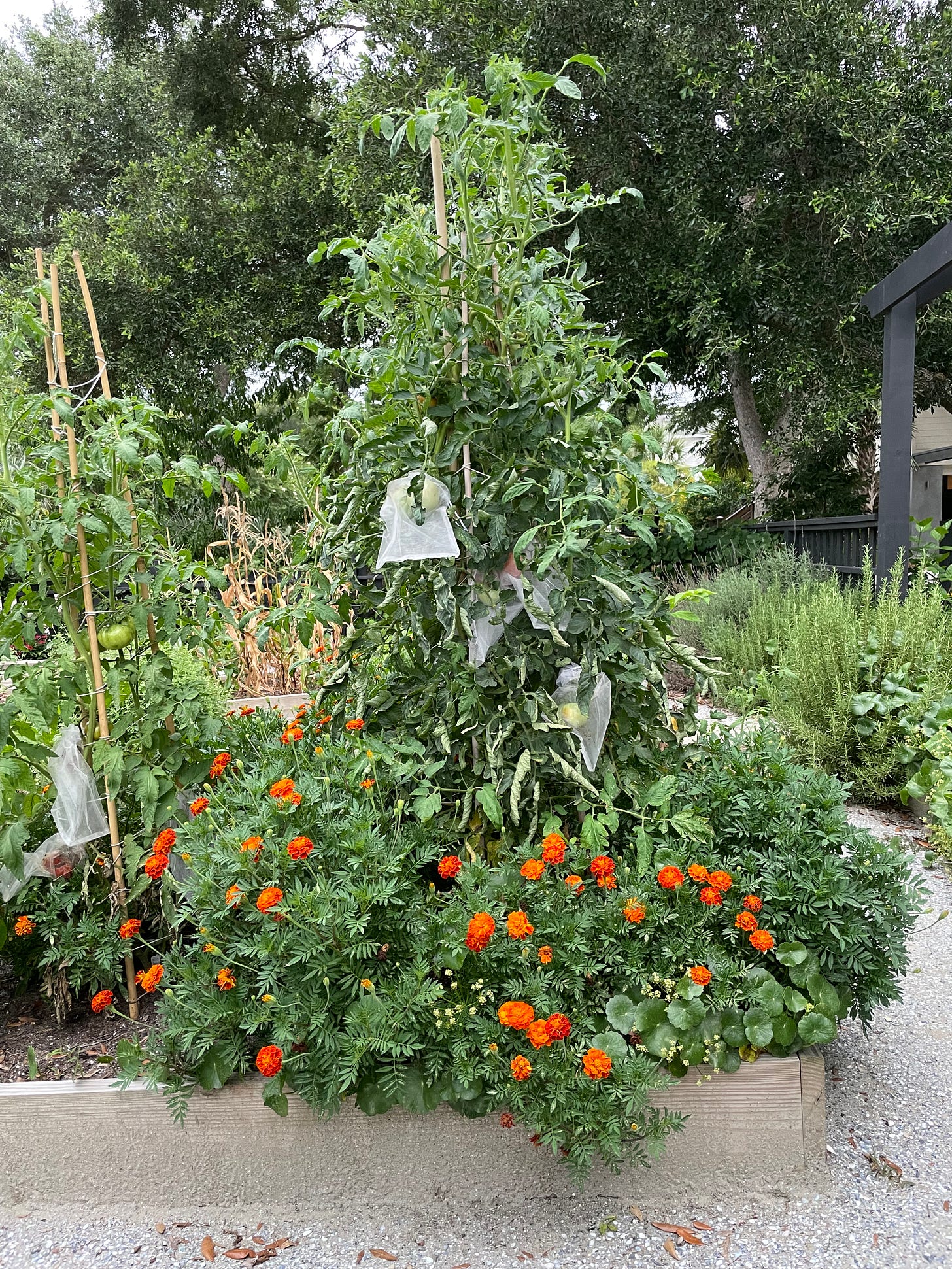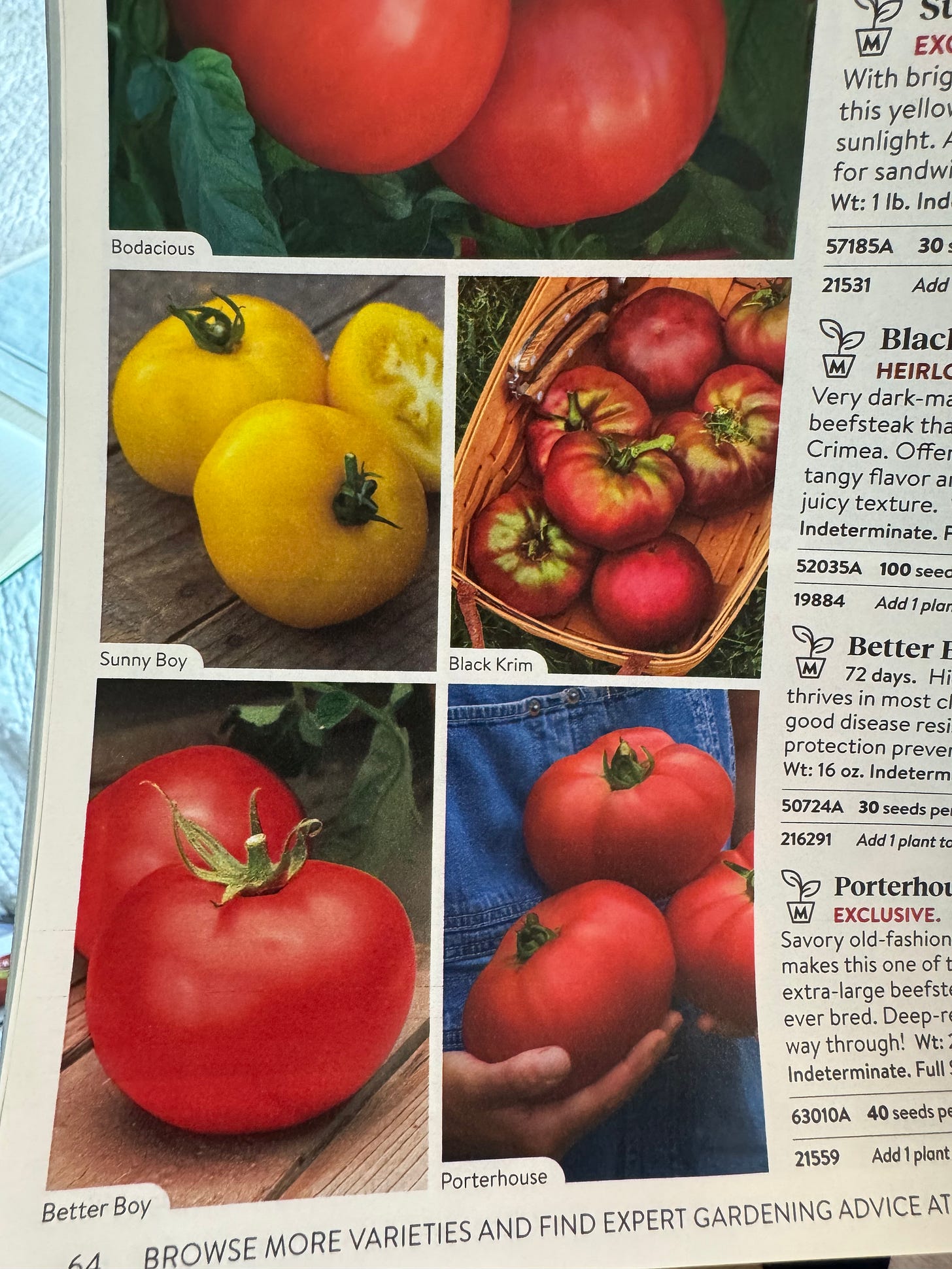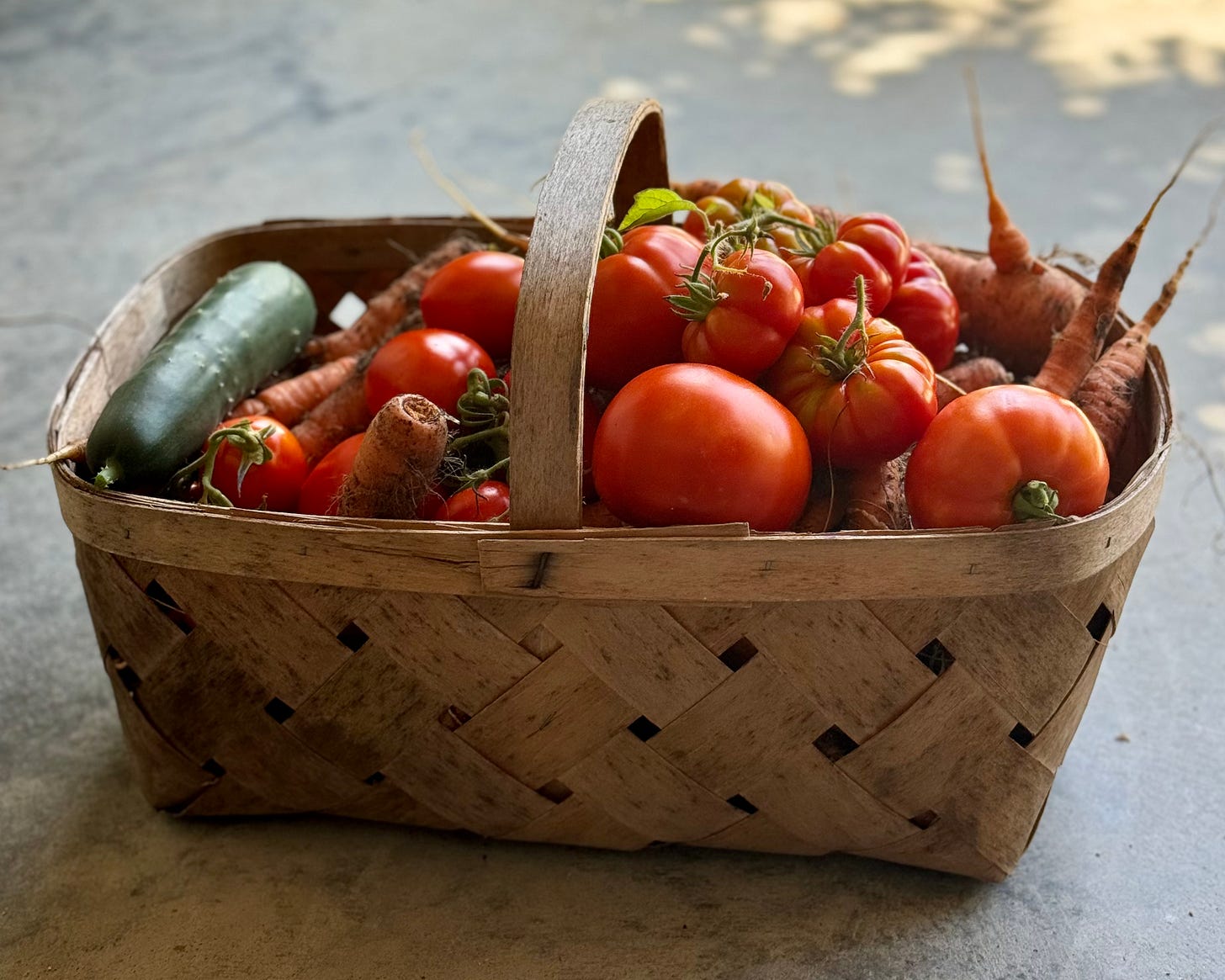Tomatoes are the crown jewel of my summer garden….and they are the fruit that I work the hardest for. Every year I try new varieties and methods to extend my harvest, and every year around the end of July, I admit defeat. The nematodes, early blight, late blight, Verticillium wilt, Fusarium wilt, leaf spot and leaf curl, stink bugs and leaf footed bugs at some point take my crop out.
Growing Tomatoes in the Southeast is hard.
We have extreme heat, extreme humidity and unpredictable, heavy rainfall and all of these conditions make it tough to grow healthy and disease free tomatoes. Yes it seems to our northern friends that we have a long growing season down here in the south, but if the truth is told by mid summer most of our tomato crops are struggling and need to be pulled. Some people have had success with a “fall” tomato planting that goes in July, but for me the diseases are too prevalent to let a second crop thrive without extensive chemical intervention.
How to choose tomatoes
Let me start with how NOT to choose tomatoes….by a picture in a catalogue! More than a few gardeners have been enticed by a pretty picture. The most important part of a seed catalogue is the description of disease resistance. This is the reason that my favorite catalogue is Johnny’s Seeds, they do an impeccable job of laying out a seeds resistance. The point of growing your own food is to eat it, right?? So, let me encourage you to grow something that will thrive in YOUR garden. Because when it thrives, you will eat more of it.
So, how should you choose tomatoes? Go to your state extension website, here in South Carolina mine is Clemson Extension, and find what tomato diseases are common to your area and what varieties they recommend.
The new varieties are bred to have disease resistance. Many people are scared to plant something that isn’t an heirloom variety because the social media gardeners talk heirloom plants up to be the better choice. And in some ways heirloom varieties have significant advantages (a topic for another day) but in the case of disease resistance, many F1 and hybrid type seeds are superior. Less disease, means less chemical intervention (organic & synthetic) and a longer and larger harvest.
If you have space for both, plant both types! If you have space for only only 1, F1 and hybrid seeds will likely give you a higher yield over a longer period of time.
Here is the list of seeds I’m planting this year:
Beefsteak
Celebrity, F1 (Indeterminate) - from Johnny’s
This is last year’s tomato variety, but I still have seed so I’m planting it again. Johnny’s has improved this seed to include increased resistance and is selling it as Celebrity Plus, if I needed new seed I’d buy the Celebrity Plus.
Brandywine, heirloom (Indeterminate)
This heirloom has some resistance to early blight and fulvia blight, they get taken out by disease before the other tomatoes in my garden but I love them because the flavor is incredible.
Skyway, F1 (Determinate)
another of Johnny’s last year seeds with a broad disease resistance package bred for the South, it’s still available but didn’t make the new 2025 catalogue. If I were replacing it this year I’d choose Defiant PhR.
New Girl, F1 (Indeterminate)
This one is new to me and comes highly recommended by a California garden friend. This variety is supposed to have more disease resistance and flavor than the long time favorite Early Girl.
Paste Tomato
Granadero, F1 (Indeterminate)
A standout in my garden last year which is saying something because my plants were very neglected in 2024! These are prolific and disease resistant.
San Marzano II, heirloom (Indeterminate)
These originate in Parma, Italy where it was developed for the canning industry. The Granadero performed better for me but the taste of this tomato was very nice.
Specialty
Juliet, F1 (Indeterminate)
The most prolific producer of grape sized tomatoes in my garden. They produce late into the season (the flavor does decline on late season tomatoes in my garden). This variety was recommended to me by friends in Eleuthera, Bahamas as a standout for heat and disease resistance. I can confirm that it is very heat and disease resistant.
Sungold, F1 (Indeterminate)
I’ve been growing these for years and they are reliable, prolific and beautiful. These and the Juliet’s are usually the last tomatoes standing in the garden.
I always wish I had more space to plant more varieties! But I only give them two raised beds a year. Ideally tomatoes and all plants in the solanaceae family should be rotated every 3 years, so it’s best not to plant them everywhere. Because you need to give the beds a rest for the next two years from tomatoes before you plant again.
I hope this helps you when it comes to deciding which varieties of tomatoes you are growing this year. If you live in the south, now is the time to order and start your tomato seeds. I like to give my plants 8 weeks before I plant them out, and that date for me is March 1. If you live in central Florida, you can begin planting tomatoes as early as mid February.
Happy Planting!








